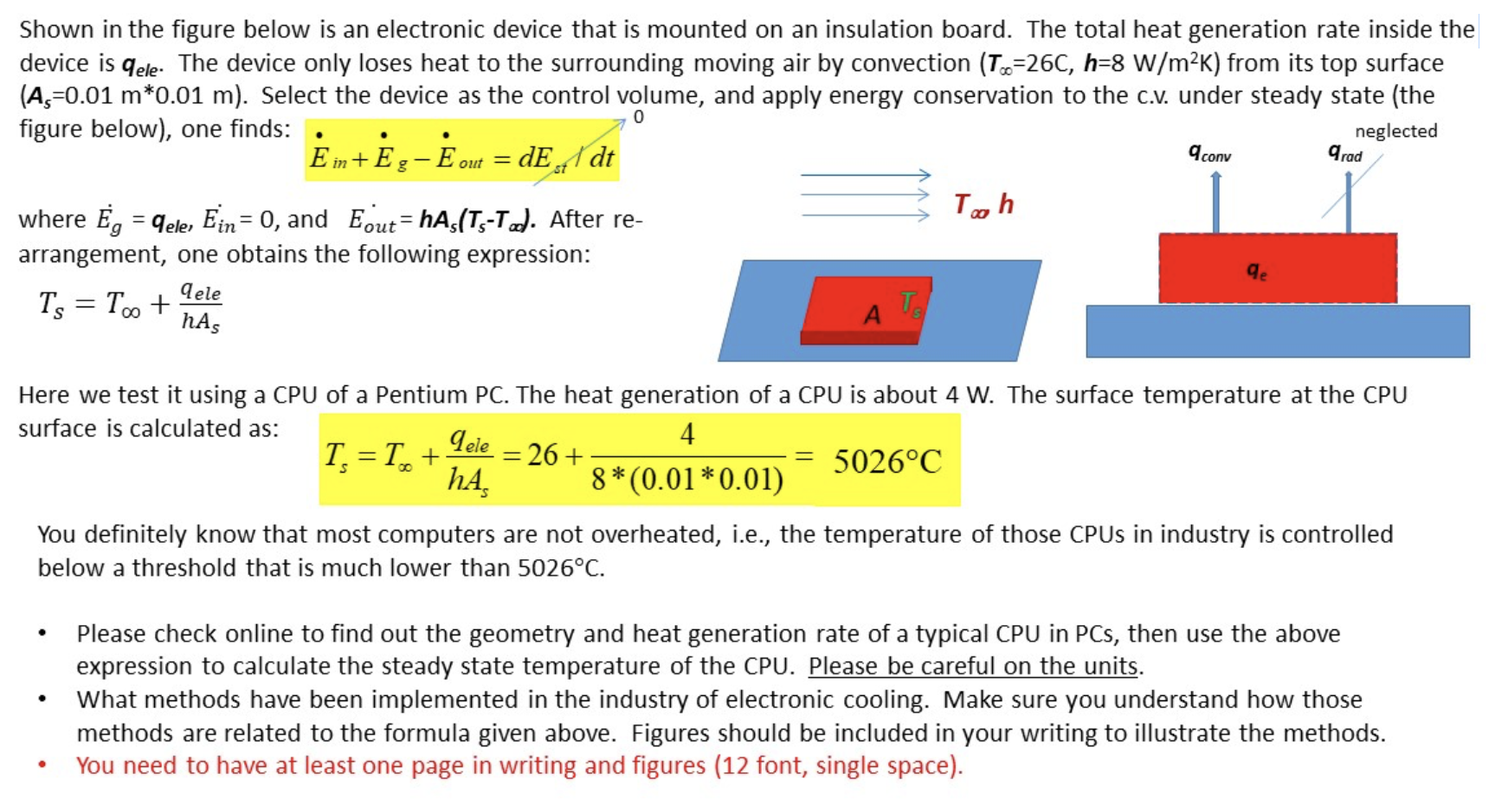Answered step by step
Verified Expert Solution
Question
1 Approved Answer
Shown in the figure below is an electronic device that is mounted on an insulation board. The total heat generation rate inside the device is
Shown in the figure below is an electronic device that is mounted on an insulation board. The total heat generation rate inside the device is The device only loses heat to the surrounding moving air by convection from its top surface Select the device as the control volume, and apply energy conservation to the cv under steady state the figure below one finds: where and After re arrangement, one obtains the following expression: Here we test it using a CPU of a Pentium PC The heat generation of a CPU is about The surface temperature at the CPU surface is calculated as: You definitely know that most computers are not overheated, ie the temperature of those CPUs in industry is controlled below a threshold that is much lower than Please check online to find out the geometry and heat generation rate of a typical CPU in PCs then use the above expression to calculate the steady state temperature of the CPU. Please be careful on the units. What methods have been implemented in the industry of electronic cooling. Make sure you understand how those methods are related to the formula given above. Figures should be included in your writing to illustrate the methods. You need to have at least one page in writing and figures font, single space 
Shown in the figure below is an electronic device that is mounted on an insulation board. The total heat generation rate inside the
device is The device only loses heat to the surrounding moving air by convection from its top surface
Select the device as the control volume, and apply energy conservation to the cv under steady state the
figure below one finds:
where and After re
arrangement, one obtains the following expression:
Here we test it using a CPU of a Pentium PC The heat generation of a CPU is about The surface temperature at the CPU
surface is calculated as:
You definitely know that most computers are not overheated, ie the temperature of those CPUs in industry is controlled
below a threshold that is much lower than
Please check online to find out the geometry and heat generation rate of a typical CPU in PCs then use the above
expression to calculate the steady state temperature of the CPU. Please be careful on the units.
What methods have been implemented in the industry of electronic cooling. Make sure you understand how those
methods are related to the formula given above. Figures should be included in your writing to illustrate the methods.
You need to have at least one page in writing and figures font, single space
Step by Step Solution
There are 3 Steps involved in it
Step: 1

Get Instant Access to Expert-Tailored Solutions
See step-by-step solutions with expert insights and AI powered tools for academic success
Step: 2

Step: 3

Ace Your Homework with AI
Get the answers you need in no time with our AI-driven, step-by-step assistance
Get Started

